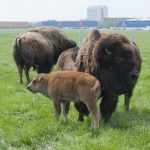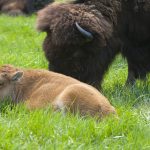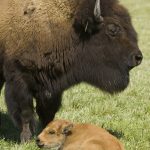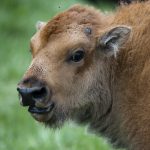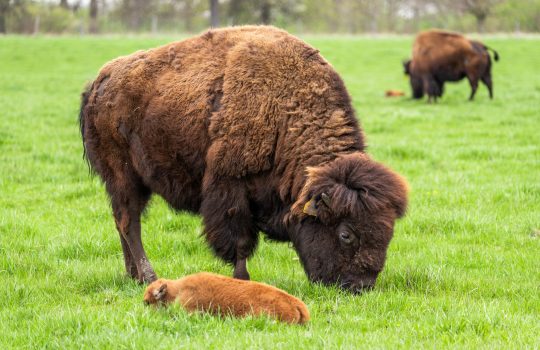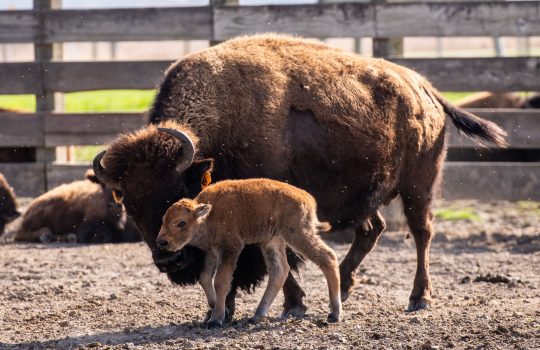Batavia, Illinois—Fermi National Accelerator Laboratory welcomes the public to view its herd of American bison, commonly known as buffalo. Five calves have been born in the past few weeks, increasing the herd size to 25. Visitors, including families with young children, can enter the Fermilab site through its Pine Street entrance in Batavia or the Batavia Road entrance in Warrenville. Admission is free, but a valid photo ID is necessary to enter the site. Summer hours are from 8 a.m. to 8 p.m., seven days a week.
Fermilab’s first director, Robert Wilson, established the bison herd in 1969 as a symbol of the history of the Midwestern prairie and the laboratory’s pioneering research at the frontiers of particle physics. The herd remains a major attraction for families and wildlife enthusiasts. Today, the Fermilab site also boasts 1,100 acres of reconstructed tall-grass prairie as well as seven particle accelerators. The U.S. Department of Energy designated the 6,800-acre Fermilab site a National Environmental Research Park in 1989.
Visitors can learn more about nature at Fermilab by hiking the Interpretive Prairie Trail, a half-mile-long trail located near the Pine Street entrance. The Leon Lederman Science Education Center offers exhibits on the prairie and hands-on physics displays. The Lederman Center hours are Monday-Friday from 8:30 a.m. to 4:30 p.m. and Saturdays from 9 a.m. to 3 p.m.
For up-to-date information for visitors, please visit www.fnal.gov or call (630) 840-3351.
To learn more about Fermilab’s bison herd, please visit our website at www.fnal.gov/pub/about/campus/ecology/wildlife/bison.html.
Fermilab is America’s premier national laboratory for particle physics research. A U.S. Department of Energy Office of Science laboratory, Fermilab is located near Chicago, Illinois and operated under contract by the Fermi Research Alliance, LLC. Visit Fermilab’s website at http://www.fnal.gov and follow us on Twitter at @FermilabToday.
The DOE Office of Science is the single largest supporter of basic research in the physical sciences in the United States, and is working to address some of the most pressing challenges of our time. For more information, please visit http://science.energy.gov.
- Fermilab welcomes the public to view its herd of American bison, commonly known as buffalo. The herd grazes on a pasture half a mile from Wilson Hall, Fermilab’s 16-story administrative building. Photo: Fermilab
- Fermilab’s first director, Robert Wilson, established the bison herd in 1969 as a symbol of the history of the Midwestern prairie and the laboratory’s pioneering research at the frontiers of particle physics. Photo: Fermilab
- North American bison can reach a height of more than five feet and a weight of 2,500 pounds. They can run at a speed of more than 30 miles an hour. Photo: Fermilab
- Buffalo babies are usually born in spring, after a gestation of nine months. Photo: Fermilab

